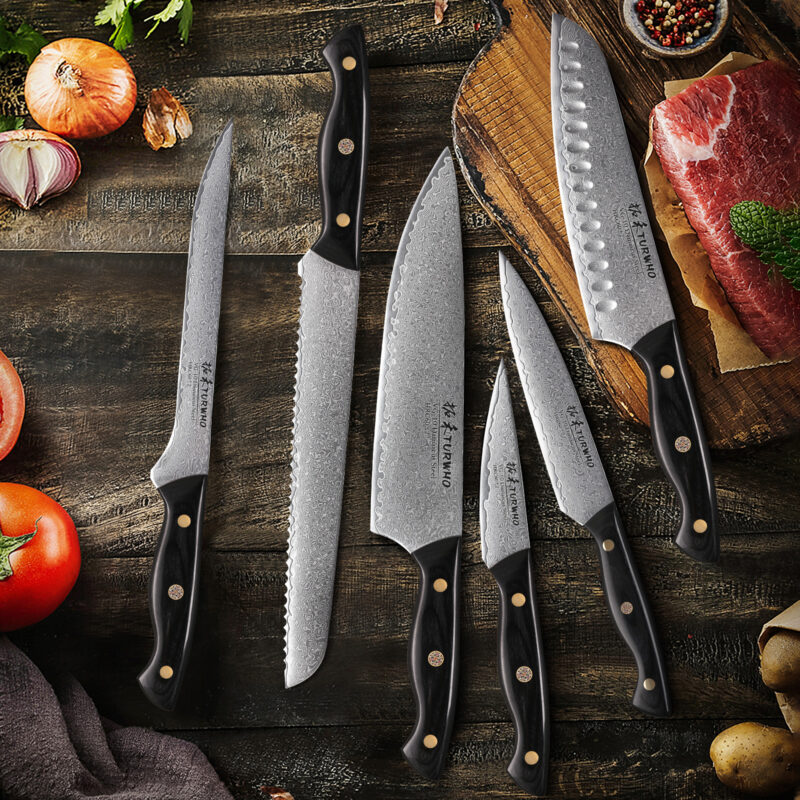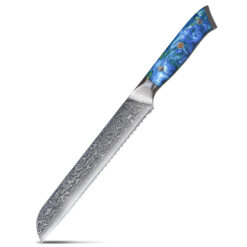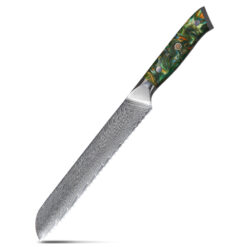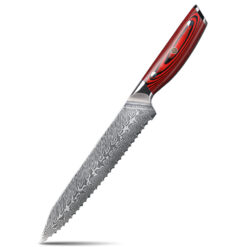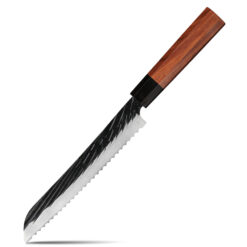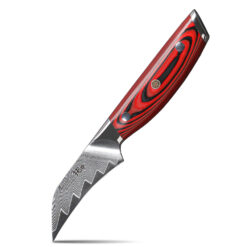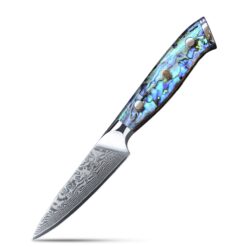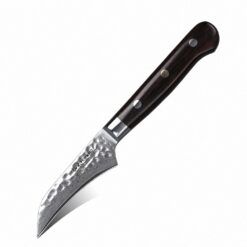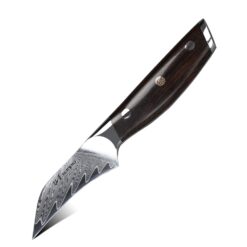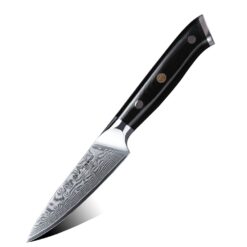Chef Knives Wholesaler, Chef's Knives, Chef's Knives Bulk Supplier
Personalized Custom Chef Knife is Easy
Table of Contents
Personalized Engraved Kitchen Knives
Create high quality custom kitchen knives for Wedding, Anniversary, Graduation, Retirement, and more!
Upgrade Cooking Skills in Seconds with the Right Chef’s Knife
As a home chef, you know that the right tools can make all the difference in your cooking experience. One essential tool that every home cook should invest in is a good kitchen knife. A sharp chef knife can help you slice through vegetables, chop herbs with precision, and carve meat like a pro.
But with so many options on the market, how do you choose the best one for your needs? In this article, we’ll explore what makes a good kitchen knife and share tips on how to select the perfect sharp chef knife for any home cook. Whether you’re just starting out or are an experienced cook looking to upgrade your knives, this guide will help you buy with confidence.
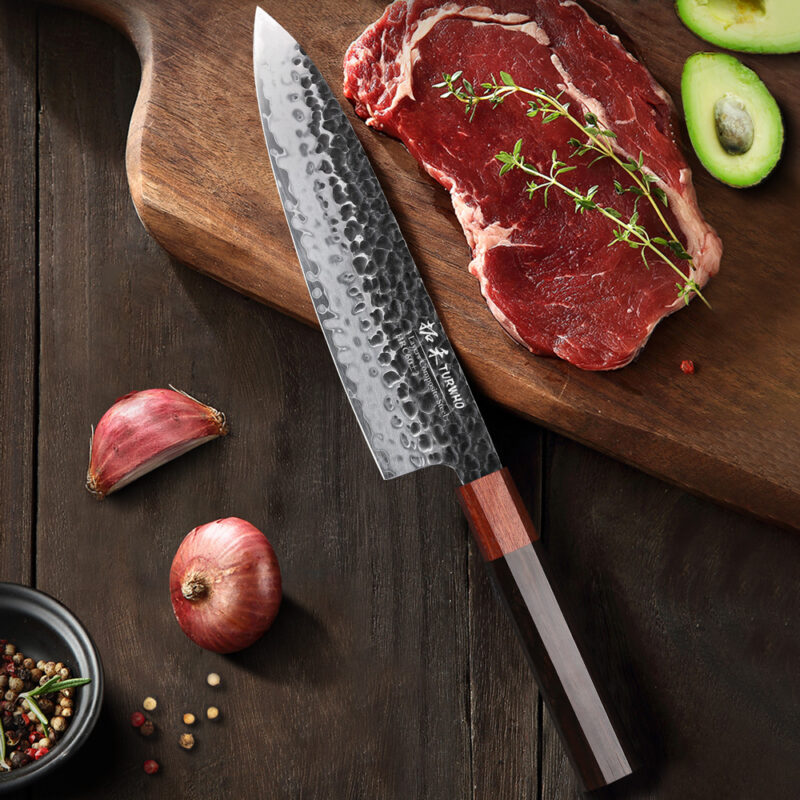
Type of Steel for Kitchen Knives
- High carbon steel knives are incredibly durable and can handle a variety of tasks, from slicing vegetables to cutting through tough meats. They also hold an edge longer than other types of knives, making them ideal for those who want to keep their knives sharp for longer periods of time. Additionally, high carbon steel knives are easier to sharpen than other types of knives, making them a great choice for those who want to keep their knives in top condition.
- The stainless steel knife is durable and resistant to corrosion, making it a great choice for everyday use. It is also easy to clean and maintain, ensuring that it will last for many years. Its sharp edge allows for precision cutting and slicing, making it ideal for a variety of tasks. Whether you are chopping vegetables, slicing meat, or spreading butter, a stainless steel knife is an invaluable addition to any kitchen.
- A Damascus clad steel knife is a special type of knife that is made out of two different kinds of steel. The steel is layered together to create a strong and sharp knife that is perfect for cutting.
Kitchen Knife Steel Grades
Steel grades are an important factor to consider when purchasing kitchen knives.
High carbon steel is known for its strength and sharpness, but is more prone to rust and corrosion than stainless steel. There are many great carbon steel for knife making such as DC53,1095.
Stainless steel, on the other hand, is more resistant to corrosion and is easier to maintain, but is not as sharp as high carbon steel. Good staubless steel for kitchen knives are AUS-8,AUS-10,X50CrMov15.
Each steel grade has its own advantages and disadvantages, so it is important to consider the type of knife and its intended use before making a decision.
The Damascus steel has stainless outer layers with a high carbon steel core.
So it can deliver the best cutting performance without getting rusted compared with high carbon steel chef’s knife.
Main Kitchen Knives Types
The blade of a kitchen knife should be well-crafted and have a sharp edge. A sharp blade is essential for precision cutting and slicing. Additionally, a sharp blade will help to reduce the amount of force needed to cut through tough foods. It is also important to look for a blade that is made of a high-quality material and is designed to stay sharp for a long time.
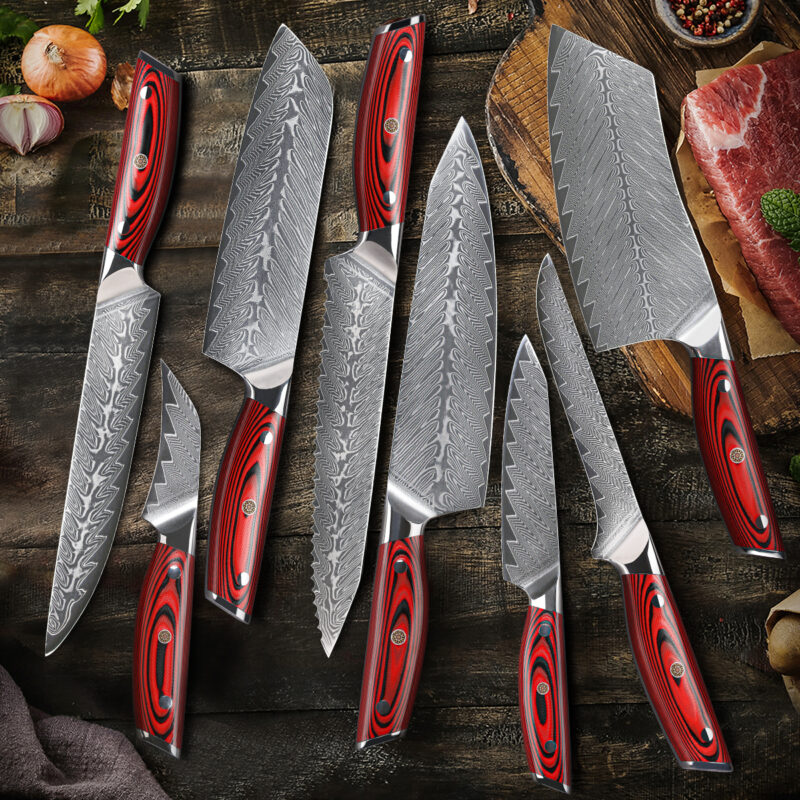
Chef Knife:
A chef knife is a versatile tool that can be used for a variety of tasks. It has a long blade that is designed for slicing, dicing, and chopping. The blade is typically made of high carbon steel and has a curved shape that is designed to provide a secure grip. The blade is also designed to be sharp and durable, making it perfect for everyday use.
Santoku Knife:
Santoku knives are a type of Japanese kitchen knife that is designed for precision cutting. The blade is usually made of stainless steel and has a straight edge with a pointed tip. The blade is typically shorter than a chef knife and is designed to be lightweight and easy to maneuver. Santoku knives are ideal for slicing, dicing, and mincing vegetables, fruits, and meats.
Bread Knife:
A bread knife is a specialized kitchen knife designed for cutting through bread. It has a long, serrated blade that is designed to easily slice through even the toughest crusts. The blade is typically made of stainless steel and is designed to stay sharp for a long time. Bread knives also have a wide blade that is designed to reduce crumbs and keep the bread intact.
Vegetable Cleaver:
A vegetable cleaver is a large, heavy knife that is designed for chopping and slicing tough vegetables. The blade is usually made of stainless steel and has a rectangular shape that is designed to provide a secure grip. The blade is also designed to be thick and durable, making it perfect for heavy-duty tasks. Additionally, the blade is typically curved to allow for easy chopping and slicing.
Carving Knife:
A carving knife is a special type of kitchen knife that is designed for slicing thin pieces of meat. The blade of a carving knife is usually made of stainless steel and has a long, thin blade that is designed to provide precision cutting. The blade is also designed to be sharp and durable, making it perfect for slicing through tough meats. Additionally, the handle of a carving knife is usually ergonomically designed to provide a secure grip and comfortable use. Finally, the blade of a carving knife should be wide enough to provide stability when slicing.
Boning Knife:
A boning knife is a specialized knife that is designed for separating meat from the bone. The blade is typically made of high carbon steel and has a narrow, curved shape. The blade is designed to be flexible and sharp, allowing for precise and delicate cuts. Boning knives are ideal for removing meat from poultry, fish, and other small animals.
Utility Knife:
A utility knife is a smaller version of a chef knife, with a shorter and thinner blade. It is designed for smaller tasks such as cutting vegetables and slicing cheese. The blade is typically made of stainless steel and is designed to be sharp and durable. It is also easy to maneuver and control, making it a great choice for those who need a smaller knife for precision tasks.
Paring Knife:
A paring knife is a small knife with a short blade that is designed for precision tasks such as peeling and coring fruits and vegetables.
The blade is typically made of stainless steel and is designed to be sharp and durable. The handle is usually ergonomically designed for a comfortable grip. The small size of the blade makes it perfect for delicate tasks that require precision and control.
kitchen Knife Blade Profile
There are three main types of blade profiles: straight, curved, and serrated.
Thickness of Chef’s Knife
The thickness of the blade affects the performance of the knife, as a thicker blade will be more durable and have a longer lifespan, while a thinner blade will be lighter, sharper and easier to maneuver.
Generally,the ideal thickness range for chef knife,bread knife,petty knife is between 1.8mm to 2.0mm. The thichness range for bone chopper and deba knife is 3.0mm to 6mm.
Handle Design
Full Tang Knife handle
The full tang handle is one of the most popular and widely used designs for kitchen knives. This type of handle is made from a single piece of metal that runs the full length of the knife, making it extremely durable and providing excellent balance. Additionally, the full tang design offers superior control and stability when cutting.
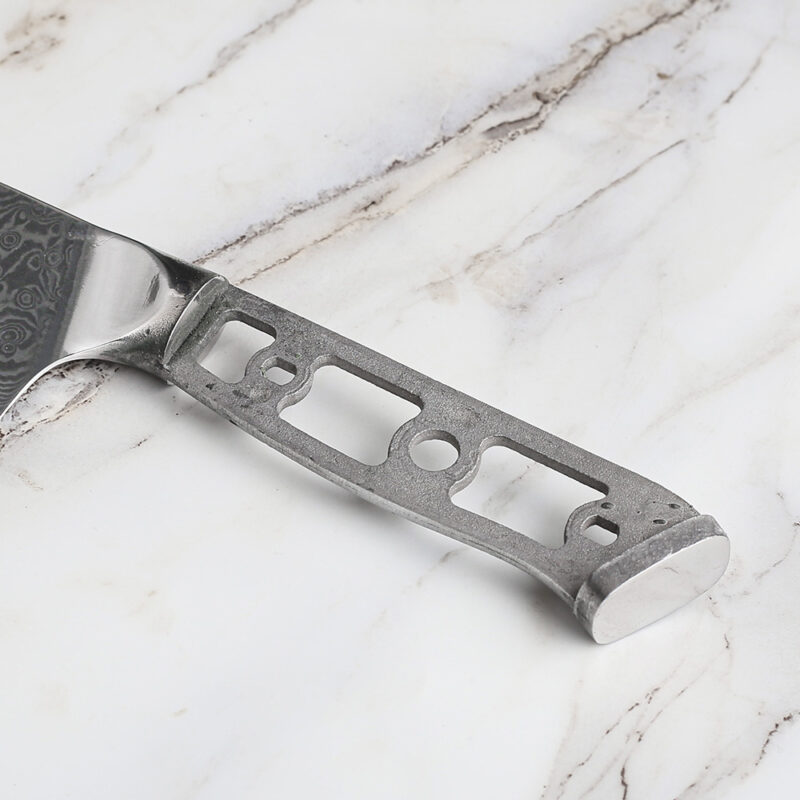
Half Tang Knife handle
The half tang handle is a popular design for kitchen knives. This type of handle is made from two pieces of metal, with one piece running the full length of the knife and the other piece running only part of the way. The half tang design is more lightweight than the full tang.
Hidden Tang Knife handle
The hidden tang handle is a unique design that is becoming increasingly popular. This type of handle is made from two pieces of metal, with one piece running the full length of the knife and the other piece hidden inside the handle.
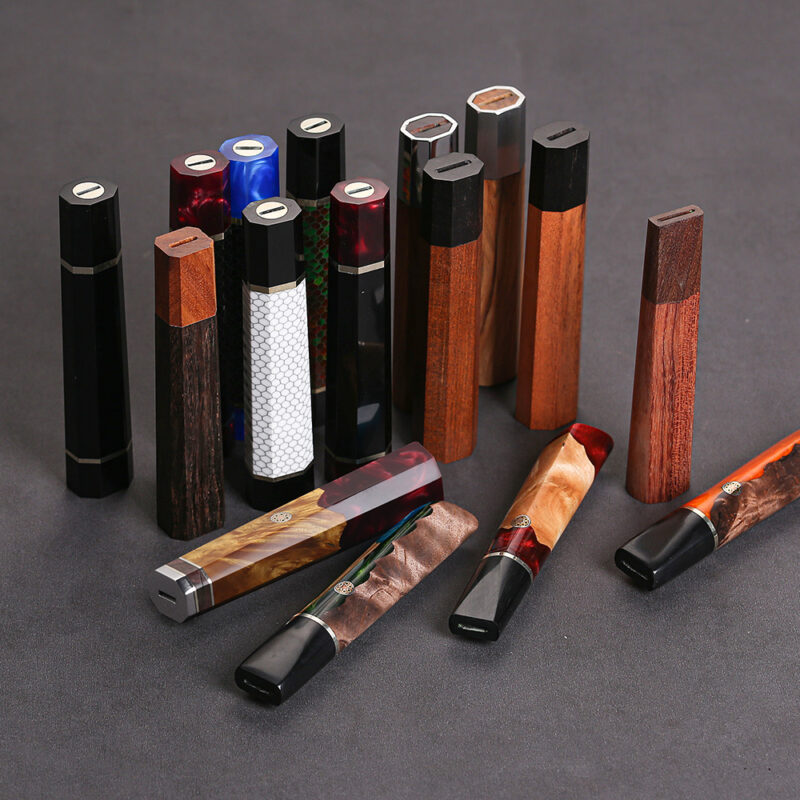
Handle Material
Handle materials come in a variety of forms, including wood, plastic, and metal. Each material has its own advantages and disadvantages, and it is important to consider these factors when choosing the right handle material for a given application.
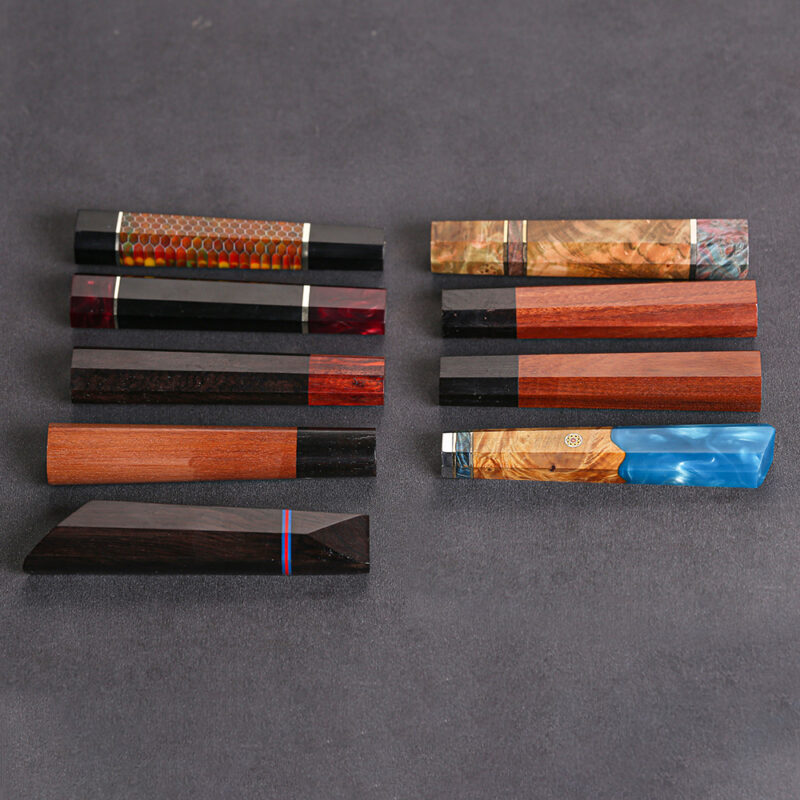
Wood is a popular choice due to its natural beauty and durability.
Plastic is lightweight and cost-effective.
Metal is strong and long-lasting, but it can be difficult to work with and may require additional maintenance.
So majority of the knives on the market today are using wood and plastic for the knife handle.
Well Designed Knife Handle
Ergonomic handles are designed to fit the hand comfortably and provide better grip and control, while traditional handles are more basic in shape and may be more comfortable for those with larger hands. Each handle shape has its own advantages and disadvantages; ergonomic handles provide better grip and control, but may be uncomfortable for those with smaller hands, while traditional handles may be more comfortable for those with larger hands but may not provide as much grip and control. Ultimately, the handle shape you choose should be based on your individual needs and preferences.
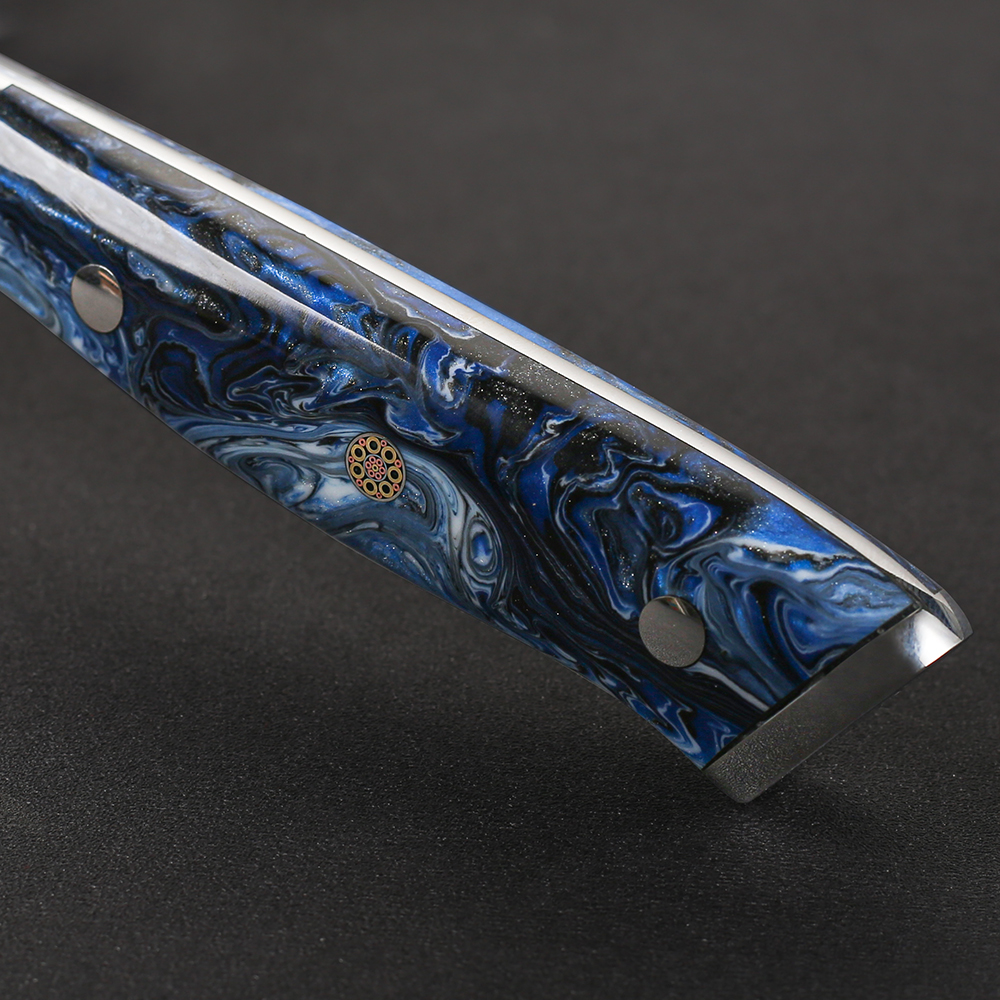
The Right Knife is the Best
Buy a good kitchen knife is a delicate art that requires careful consideration of a variety of factors. From the type of steel used to the shape of the blade, every detail matters when it comes to creating a knife that is both functional and aesthetically pleasing. It is important to strike a balance between these two elements, as a knife that is too beautiful to use is just as useless as one that is too dull to cut.
We Support Custom Engraving Your Name on Knife.
Find a good knife for your kitchen or send some one as a personalized Gifts.


